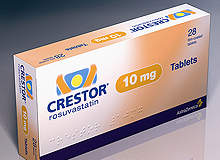
In the midst of a global recession, Australia has pulled away from its competitors to become the most attractive market for pharmaceutical investment in the Asia Pacific region. The country’s attributes of a growing and ageing population, excellent access to medicines and a fast recovering economy have made it an area of massive growth potential for both the pharmaceutical and drug development industries.
The country’s average life expectancy, at 79.2 for males and 84.1 for females, is amongst the highest in the world. This has led to an increasing list of highly treatable, lifestyle diseases such as heart diseases, diabetes and respiratory diseases such as COPD, becoming the leading health problems.
This becomes evident when you identify the country’s best selling medications. Pfizer’s Liptor, a statin used in the treatment of high cholesterol, is the significant market leader with sales totalling A$550m in 2009. AstraZeneca’s Crestor, another statin, and Nexium, used in heartburn relief, lag behind in second and third place respectively.
A land of opportunities
While the assertion that the Australian market is ready for development has been welcomed, it has also been met with a mixed response. Mayne Pharma GM of Business Development and Scientific Affairs Peter Schembri considers that whilst the local pharmaceutical market is perceived as developed and premium in comparison to regional markets, such as Asia and the EU, margins are now being significantly squeezed by Australia’s Pharmaceutical Benefits Scheme (PBS).
With the PBS and its pricing strategy squeezing the generic end of the Australian pharmaceutical market hardest, Mayne Pharma consider branded NCE and ICE (Improved Chemical Entity) products to be a specific area open for development.
The country’s Health Strategy, which promotes moving people into community care, is also expected to result in reduced growth in hospital admission days and, in turn, an increase in the use of community care based medications.
This doesn’t, however, relate to the drug and medical device development sector, which is primed to see its own benefits.
According to Schembri “as an opportunity for drug development and manufacturing, we see this as oriented to export opportunities. In this area the problem being faced at this time is the disengagement of our federal government with the pharmaceutical industry leading to reduced attractiveness to invest in manufacturing and development in Australia.
“This has led to a number of significant businesses pulling out of manufacture in this country. For product opportunities at the early stage of development we see a lack of relevant skill sets to competently develop product through to the stage of regulatory submission from Australia,” said Schembri.
PBS proving problematic
Australia’s Pharmaceutical Benefits Scheme, a governmental program established to provide subsidised prescription drugs to Australian citizens to ensure affordable and reliable access to necessary medications, has been heralded in some quarters for rewarding innovation. Mayne Pharma GM of Research and Innovation Angelo Morella, however, believes that the status quo has merely been preserved.
“If we see that generic price squeezing will give rise to more money being available for innovative new products (NCE’s) then it is good. However, if we look at the total picture for a larger pharmaceutical company, the reduction in value achieved for generic products in their portfolio means that they are no better off than they were before, overall.
In some cases where a company has significant products experiencing generic competition, they will lose substantial margin reducing their funds available for innovation,” said Morella.
Growth’s driving factors
So what are the driving factors behind such growth? A recent report from business intelligence company Espicom highlighted the rising elderly population and high public spending, including the use of chronic high value innovative treatments, amongst the key growth drivers. Australia’s health expenditure for 2009 totalled A$81.8bn, equivalent to 9.1% of the nation’s GDP and comparable to the lucrative European market.
This aging population has led to a growing use of pharmaceuticals, confirmed by Rx data measuring numbers and doctor consultations associated with aged care. This, coupled with a country-wide drive to reduce acute health care management costs by pushing patients into community care, has proven to be an integral factor in the growth of the Australian market.
Australia’s strong economy, particularly in comparison to the competitor markets of Europe and the US, has also proven to be a decisive factor. Schembri considers that the continuing drive for wage growth has made the country less cost competitive for the manufacture of goods than it may have been historically.
“From a consumption perspective, there is strong growth which is helping local marketers of pharmaceutical goods, whereas another impact on developers and exporters is our strong AU Dollar also driven by a stronger economy,” adds Schembri.
Biosimilar market open for development
Despite high expenditure, a number of pharmaceutical niches are yet to be exploited including the growing biosimilar market. While Europe has approved 17 biosimilar medications of five different molecules since 2006, Somatropin remains the only biologic on the Australian market with similars available.
Angelo Morella believes that biosimilar medications would be well received in Australia because of a desire to cause a reduction in pharmaceutical costs for the rapidly developing class of “high cost” compounds.
With a number of biosimilar medications awaiting approval in the EU and substantial healthcare reforms in the US leading to the Approval Pathway for Biosimilar Biological Products legislation, the biosimilar market is clearly high on the agenda.
There are, however, a number of complications involved with producing biosimilars in Australia, explains Morella. “For export, we will see the barrier of ‘manufacture for export’ coming into effect due to the issue of generic market formation in other countries occurring before products come off patent in Australia. This restricts our ability to ship for market at the time of market formation.”



